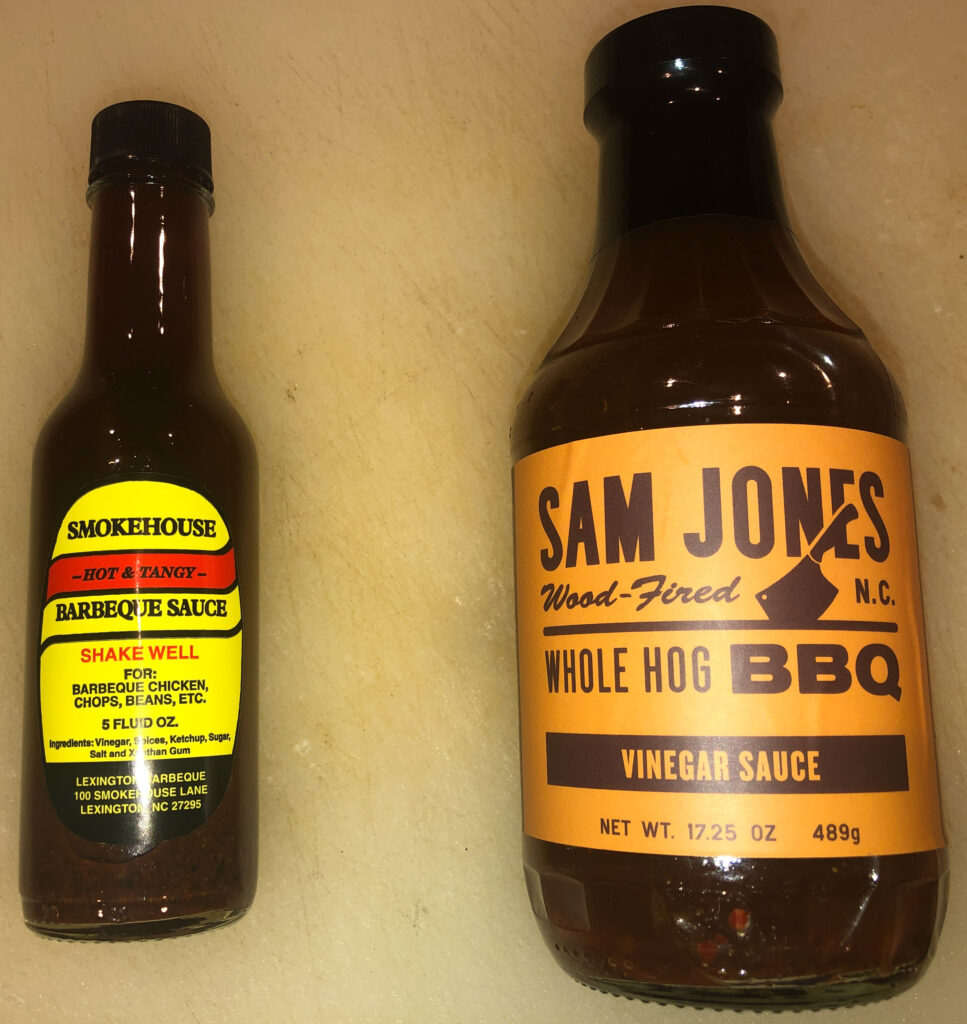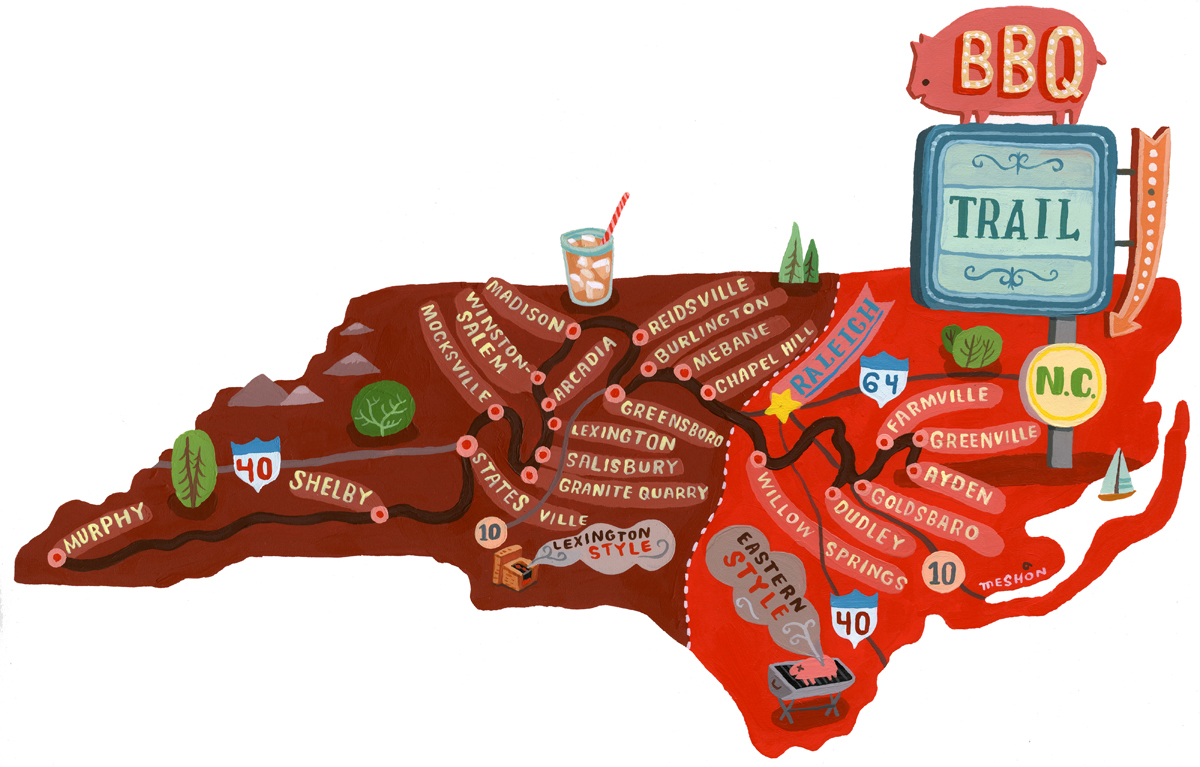Lord knows we’ve had a couple of them through the last few hundred years here in the Great State of North Cackalacky known to everyone else as North Carolina.
To be sure, there was this rather unpleasant business a little over 160 years ago we were dragged into rather unwillingly being trapped between a rival capital placed in the commonwealth north of us and some rather radical firebrands to our south who ultimately lit the fuse at a fort located at the entrance to Charleston Harbour.
Then there is the even more virulent civil war that erupts like clockwork in autumn along with hockey season and reaches its fever pitch in March like clockwork. Sides will be picked and defended vigourously and there will even be tent cities that will last for days just to have the chance at getting a ticket to see probably the most storied rivalry known on Tobacco Road.
Nicholas and Katie routinely don the red of North Carolina State University and whilst I’d never want to tell them that they were wrong to do so, I would point out these two facts in favour of the oldest public university in these United States:
- If God wasn’t a Tarheel fan, then why did they make the sky Carolina Blue?
- I was Tarheel born and Tarheel bred, and when they bury my ass I’ll be Tarheel dead!
At least both camps can cheerfully agree that we really dislike Dook and that generally keeps the peace! 😉
One could argue that politically North Carolina is in the midst of yet another civil war. Polls consistently show us as about as “purple” a state as you can find in this country that’s divided right down the middle 50/50 but you’d never know it looking at the hyper-gerrymandered electoral maps that’s already put an entrenched super-majority in both houses of the Jones Street Mob and looks like they’re going to try to do the same to our Congressional delegation.
We’re still working on trying to fix that one.
But then there’s *THE* civil war that’s been raging continually since soon after the colony of Carolina was founded and likely will be continuing long after we’ve passed on as long as the masters of the barbecue pits continue to offer up pigs to these altars of wood and charcoal.
This is the eternal battle between Eastern style and Western or Lexington style North Carolina BBQ.
The dividing line has roughly stabilised along the front established by the path of Interstate 85 that cuts a diagonal from the Virginia border to the revered border established in 1729 with that other “Carolina” that seems to have an unholy fascination with using mustard in their sauce on the southwest side of Charlotte.
What Both Sides Of North Carolina Agree is BBQ
No matter which side of I-85 you find yourself, the biggest point of agreement between the regions is that barbecue comes from PIGS.
Full stop.
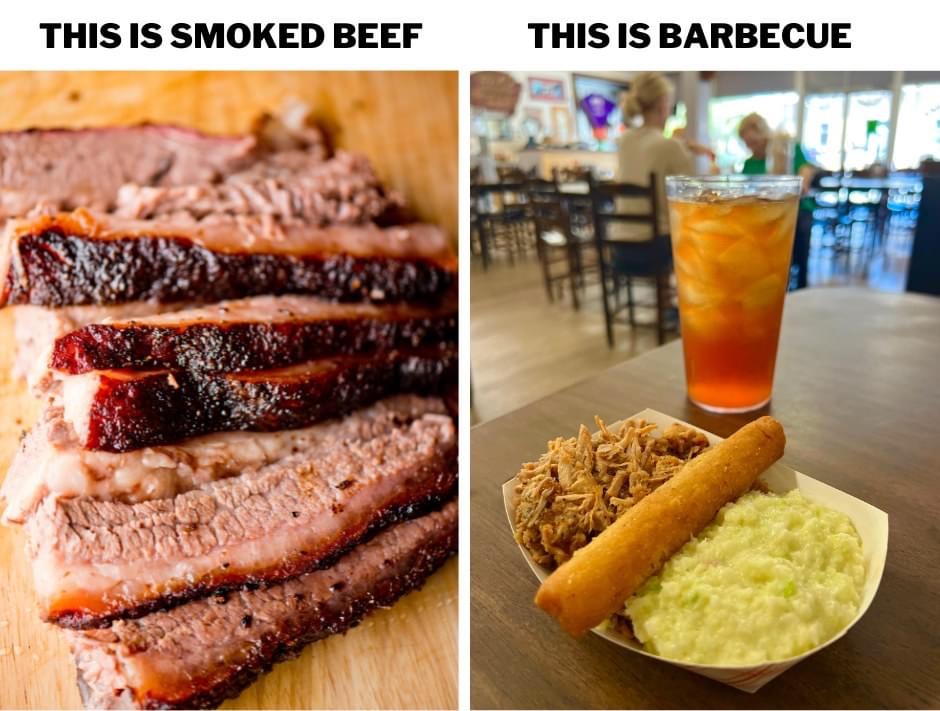
Don’t get me wrong…I’ve lived in Texas multiple times and do so love mesquite and hickory smoked brisket as much as any respectable citizen of the Republic but to a native of North Carolina, if it ain’t invited to a pig pickin’, it ain’t real BBQ.
You don’t bring a cow to a pig pickin’.
It just ain’t done.
The following map does show a reasonably accurate take on the native North Carolinian’s view on the current state of BBQ in our country. I may be reading a bit much into this map but I suspect that the one that created it grew up in the eastern part of North Carolina.
I’m not saying they’re wrong per se because I can certainly appreciate that view having spent the vast majority of my life living east of I-85 which has included quite a bit of quality time at Chason’s BBQ in Lumber Bridge and done the occasional pilgrimage to Wilber’s BBQ in Goldsboro where F-15 pilots were known to park their Eagles on a ramp adjacent to that temple of Eastern swine and have a few sandwiches before firing up the jets and taking off for their base.
But you’ll find that it’s a bit more of a genteel disagreement between the two North Carolina styles and that we’d just as soon have the real Tarheel BBQ no matter our regional preference than something pretending to be what it isn’t. 🙂
OK, there was that one attempt by the General Assembly to pick the Lexington BBQ Festival as the state’s official BBQ celebration in 2006 (House Bill 21/Senate Bill 47) that ruffled enough feathers that it was ultimately defeated and didn’t become law.
Fortunately, cooler heads prevailed the next session and in 2007 the slightly tweaked House Bill 433 became Session Law 2007-0533 which proclaimed the Lexington BBQ Festival as the official food festival of the Piedmont Triad region.
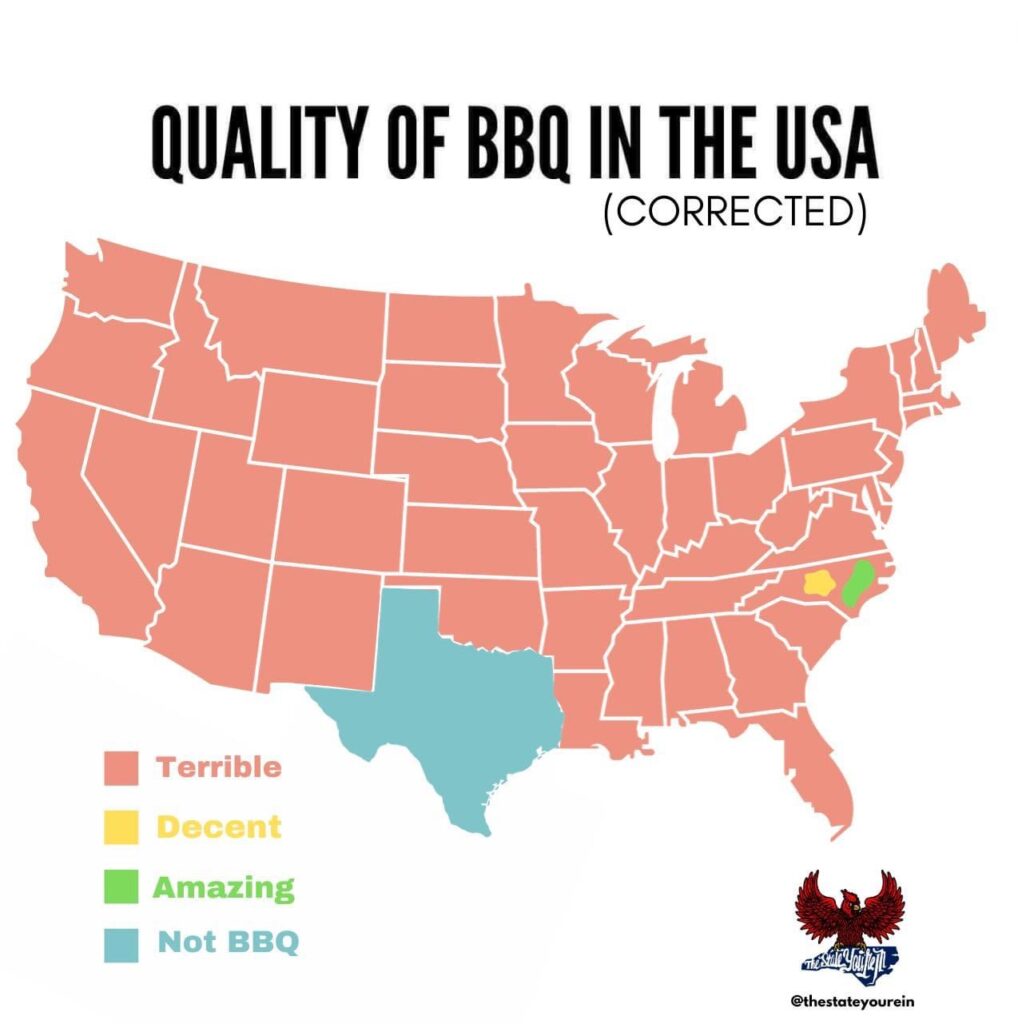
Here’s Where It Gets a Bit Complicated
Wars (civil and otherwise) in North Carolina have rarely been of the North/South variety other than the general appreciation of the year 1729 but I’m getting ahead of myself a bit.
Since the founding of the colony, there has always been a tension that’s been roughly East/West owing to the reality that the eastern part was settled first and was consistently home to a much larger population than the western counties.
The governance of the colony of Carolina was always fraught with corruption and the occasional despicable character who would be set in authority over us. The Carolina colony (unlike most of the others) was ruled by the representatives of eight Lords Proprietors whose names still prominently feature in the eastern areas.
Perhaps the most infamous of these creatures was Seth Sothel who claimed to be the ruler of the northern and southern areas of the colonies even though there was no record of him ever being qualified to be governor much less ever having been appointed by Earl Clarendon or any of the other Lords Proprietors and he was frequently recalled to England to answer to charges of treachery. On one such trip to to take up his fraudulent claim to rule on behalf of the Lords Proprietors, he was caught and ransomed by the pirates operating out of Algeria.
Sothel’s problem was that he was so despised that no one showed the slightest interest in paying the ransom demanded by the Barbary pirates and after about six months, they finally released him having found that feeding his voracious appetite and generally unpleasant demeanour was far more costly than he was worth. Sothel finally made it to North Carolina where he declared himself governor and within six months had pissed off pretty much everyone in the colony that they shipped him back to England to stand trial where he was barred from any office in North Carolina. He would make a brief attempt to rule South Carolina before finally dying on as a squatter on his property.
By the time 1729 came round, the Crown and seven of the eight Lords Proprietors (Lord Granville was the lone holdout which would cause problems later) had given up the idea of ruling Carolina as a proprietary colony and sold their claims to King George II who promptly made Carolina a royal colony split along the present line. The two resulting colonies at this point couldn’t have been any more different where the very decentralised governments in North Carolina already had thirty counties ruled from New Bern and was well on its way to the 100 it has today whereas South Carolina had three counties roughly equivalent to its regions (Low country, piedmont, and up country) but was effectively ruled from a centralised government in Charleston.
In the years just prior to the American Revolution, the regional tensions between east and west in North Carolina were inflamed by a royal governor who truly meant to do well by the state he was given to govern. By the time Governor William Tryon arrived in the 1760s, what passed for government in North Carolina was usually a few rich men passing the county offices amongst them each year and charging far more in taxes and legal fees than the law allowed.
Tryon’s audit found that the sheriffs and other officials of the county courts had extorted 64,000 pounds sterling (a princely sum in that day and age) more in taxes and fees than they were allowed and of that sum, 48,000 pounds sterling could not be accounted for other than having been outright stolen. A common lament was that the lawyers were no less corrupt…the fee for a simple registering of a conveyance was fixed in the law at two shillings but good luck finding a lawyer who would do it for less than 10 pounds sterling which was many times that statutory rate.
Governor Tryon didn’t exactly endear himself to the citizen of the western counties when he levied a tax of two shillings and sixpence on every resident of the colony to build a governor’s palace in New Bern which remains one of the best examples of Georgian architecture you’ll ever find. The problem was that people in the western part of the state (which now included the Mecklenberg region encompassing the modern city of Charlotte) would never see that palace in their life and resented paying such a high tax to house a governor they had no use for in the first place.
This would come to a head at the Battle of the Alamance which pitted Governor Tryon and his professional army from the east against a rag-tag group of rather hyped-up angry westerners (called the Regulators) that if truth be told were rocking more than a little of the liquid courage as they’d raised hell in town and did a bit of tar and feathering of the corrupt officials that had abused them for years. Neither side was particularly interested in fighting and after a couple of hours staring at each other, Governor Tryon was finally moved to yell “either fire on THEM or fire on ME”.
The biggest surprise of the “battle” was that Governor Tryon didn’t get a load of shot from both sides because he was so unpopular. As for the battle itself, someone got an itchy trigger finger and that set it off but it was over quick…the westerners were no match for a professionally trained and drilled army.
Governor Tryon couldn’t get out of North Carolina fast enough to take up the governorship of New York before finally returning to England when the Revolution broke out and he never returned.
East versus West in the North Carolina BBQ War
As the two regions of the state are very different culturally, it was not terribly surprising that the BBQ favoured by each reason would also evolve independently.
Whilst the pig is certainly the common element between them, the actual BBQ styles couldn’t be more different.
Eastern Style Vinegar-Based BBQ
Eastern style barbecue is where the whole hog is split and cooked over a wood fire BBQ pit. One joke heard from many a pitmaster in the east is that they use “every bit of the hog except for the squeal!”
The sauce used in the east is a thin vinegar and pepper-based concoction that has no tomatoes in it whatsoever (mainly because tomatoes do not grow well in the sandy and swampy areas that are most of the eastern half of the state’s soil).
It’s relatively rare for the sauce to be used during the cooking process but it’s not unheard of.
Once the pork is done, the hog is pulled apart and then chopped very fine to allow for the thin vinegar and pepper-based sauce to better soak into the meat. Customary sides are a mayonnaise-based slaw and a rather unique dense cornbread that’s kind of an acquired taste to those not used to it.
Arguably, the definitive examples of Eastern style BBQ would probably be Ayden’s Skylight Inn founded by Pete Jones and still family run to this day and Wilber’s BBQ in Goldsboro near Seymour-Johnson Air Force Base.
Fortunately, those of us in Raleigh don’t have to make the 90-minute trek to Greenville as Sam Jones (grandson of Pete) has opened a place on Lenoir St downtown and yes, that is some awesome Eastern-style like I grew up with!
Western/Lexington Style Tomato-Based BBQ
Lexington style barbecue uses only the shoulder of the pig rather than the whole hog favoured in the east but the cooking method is pretty similar using wood in a BBQ pit where the cooking is more from the smoke than the actual fire.
The shoulders are then pulled apart and often left comparatively coarse compared to eastern style and then finished with a noticeably thicker tomato-based vinegar sauce with pepper flakes.
The sauce is also used as the base for the coleslaw (“red slaw” or “barbecue slaw”) rather than mayonnaise and hush puppies are the customary bread.
As you can imagine, if you want the definitive Lexington style BBQ…there’s really only one choice and that’s at “The Monk” otherwise known as Lexington BBQ at the apex of a turn of the road of many numbers.
I’ve also enjoyed some very good pig at Stamey’s in Greensboro who learned their trade in Lexington. Stamey’s was very handy when the Hurricanes played at the Coliseum for their first two years in North Carolina as parking in Stamey’s lot was cheaper and one could just bolt across High Point Road and beat the traffic back to I-40 for the trek home to Raleigh!
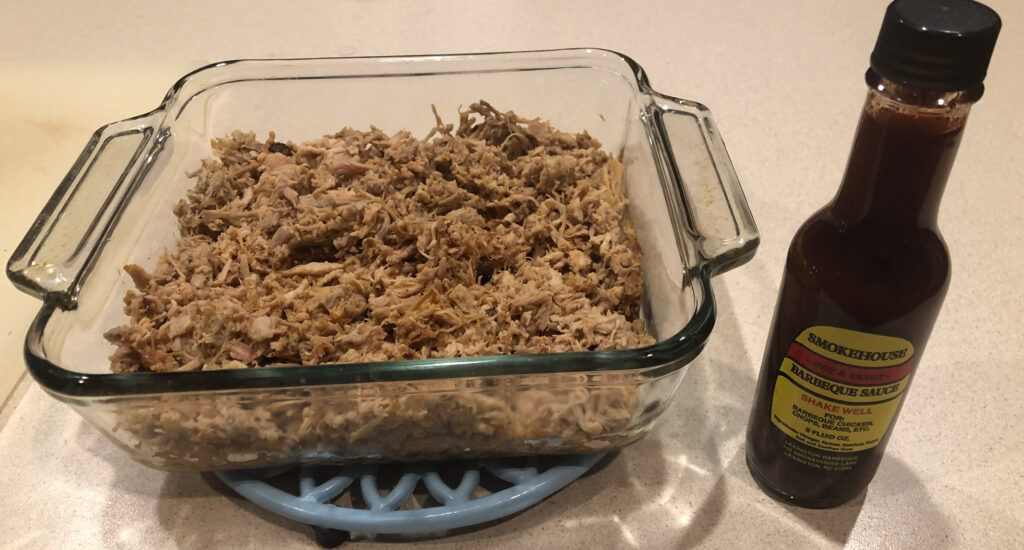
So Which Side Will You Choose?
Whilst North Carolinians will certainly have their BBQ preference, I’ve found that there’s really no way you’re going to go wrong if you get your BBQ fix at a place that still smokes that pig over wood-fired coals which is sadly getting to be harder and harder to find as pitmasters fall prey to the siren song of the efficiency of propane gas.
I’ll admit that I’ll always be partial to Eastern style and thank goodness there’s a really good one in downtown Raleigh that still does BBQ the right way.
But whether it’s Lexington or Greensboro, when I go walkabout to the west…I’m going to enjoy the Lexington style just as much.
I’ve found that when it comes to BBQ and slaw sandwiches (which is the only time you will ever catch me eating any sandwich with slaw on it), I do prefer the Lexington style quite a bit more…the Eastern slaw just doesn’t do it on a sandwich for me.
That’s why this civil war over BBQ is probably the most genteel of any of the civil wars that this state has ever experienced as it’s just too hard to put a foot wrong with good wood cooked pork!
